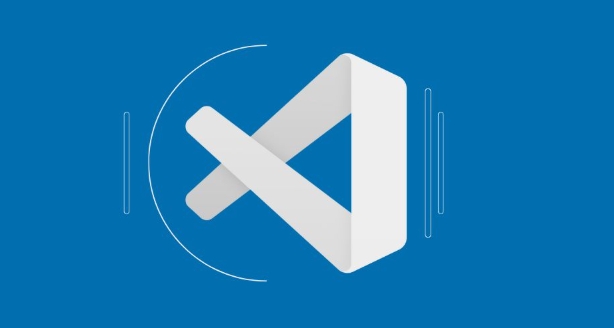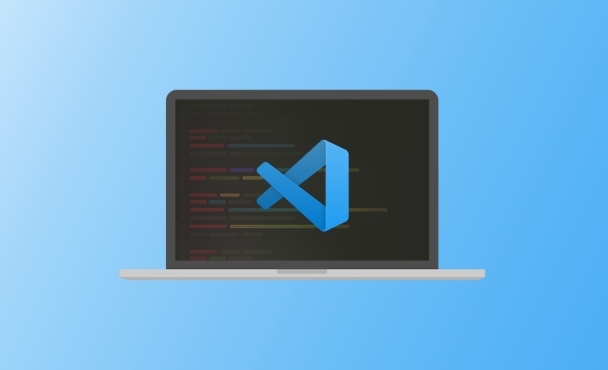To configure proxy settings in VSCode, you need to modify the configuration file or command line. The specific steps are as follows: 1. Open the settings.json file and add proxy configuration, such as "http.proxy" and "https.proxy"; 2. Use the command line parameter code --proxy-server="your-proxy-server:port" to temporarily set the proxy; 3. For remote development, proxy environment variables must be set on the local and remote servers respectively; 4. You can ignore specific addresses by setting http.proxyBypassList. After correct configuration, the network restriction problem can be solved.

Of course, here are detailed instructions on how to configure proxy settings in VSCode:

If you encounter network problems when using VSCode, such as not being able to install extensions, update software, or connect to a remote development environment, it is most likely that your network environment needs to access external resources through a proxy. At this time, you need to manually configure the proxy settings of VSCode.
VSCode's proxy settings are mainly managed through its configuration files, and are suitable for functions such as extension installation, update checking, and remote development.

1. Set up global proxy configuration (recommended)
VSCode itself does not provide a graphical interface to set up the proxy, but you can configure the proxy by modifying the settings file:
- Open VSCode settings (can be entered through
Ctrl ,or by menu barFile > Preferences > Settings) - Click the "Open Settings (JSON)" icon in the upper right corner to enter the
settings.jsonfile - Add the following:
{
"http.proxy": "http://your-proxy-server:port",
"https.proxy": "http://your-proxy-server:port"
}If your proxy requires a username and password, the format is as follows:

{
"http.proxy": "http://username:password@proxy-server:port",
"https.proxy": "http://username:password@proxy-server:port"
}Note: If you are using a Windows system and have a system-level proxy set, VSCode will inherit the system proxy settings by default.
2. Set up the proxy using command line parameters
If you do not want to modify the configuration file, you can also specify the proxy when starting VSCode via the command line:
code --proxy-server="your-proxy-server:port"
This method is suitable for temporary testing whether the proxy is valid or when switching between multiple proxy.
3. Configure the agent for remote development (Remote - SSH / WSL)
If you are using Remote - SSH or Remote - WSL plug-ins for remote development, the proxy settings need to be configured in local and remote environments respectively:
- Local VSCode settings : Same as above, set
http.proxyandhttps.proxy - Remote server settings : After logging in to the remote server, set environment variables or modify the global proxy settings of the remote system:
export http_proxy=http://your-proxy-server:port export https_proxy=http://your-proxy-server:port
If you are using a Linux system, you can write these environment variables to the ~/.bashrc or ~/.zshrc file to make them permanently effective.
4. Ignore certain addresses and do not leave the proxy
If you want certain addresses not to go through proxy, you can use no proxy settings:
{
"http.proxy": "http://your-proxy-server:port",
"http.proxyStrictSSL": false,
"http.proxyBypassList": ["localhost", "127.0.0.1", "*.example.com"]
} http.proxyBypassList can be an array that supports wildcard matching, such as ignoring local addresses or internal corporate domain names.
Basically that's it. Configuring a proxy is not complicated, but details are easy to ignore, such as whether the proxy address format is correct, whether authentication is required, and whether it needs to be set on the remote side. As long as you follow the above method step by step, the problems in most network restricted scenarios should be solved.
The above is the detailed content of How to configure proxy settings in VSCode?. For more information, please follow other related articles on the PHP Chinese website!

Hot AI Tools

Undress AI Tool
Undress images for free

Undresser.AI Undress
AI-powered app for creating realistic nude photos

AI Clothes Remover
Online AI tool for removing clothes from photos.

Clothoff.io
AI clothes remover

Video Face Swap
Swap faces in any video effortlessly with our completely free AI face swap tool!

Hot Article

Hot Tools

Notepad++7.3.1
Easy-to-use and free code editor

SublimeText3 Chinese version
Chinese version, very easy to use

Zend Studio 13.0.1
Powerful PHP integrated development environment

Dreamweaver CS6
Visual web development tools

SublimeText3 Mac version
God-level code editing software (SublimeText3)

Hot Topics
 How to change the default terminal in vscode settings?
Jul 05, 2025 am 12:35 AM
How to change the default terminal in vscode settings?
Jul 05, 2025 am 12:35 AM
There are three ways to change the default terminal in VSCode: setting through a graphical interface, editing settings.json file, and temporary switching. First, open the settings interface and search for "terminalintegratedshell" and select the terminal path of the corresponding system; secondly, advanced users can edit settings.json to add "terminal.integrated.shell.windows" or "terminal.integrated.shell.osx" fields and escape the path correctly; finally, you can enter "Terminal:SelectD through the command panel
 VSCode debugger for Java setup guide
Jul 01, 2025 am 12:22 AM
VSCode debugger for Java setup guide
Jul 01, 2025 am 12:22 AM
The key steps in configuring the Java debugging environment on VSCode include: 1. Install JDK and verify; 2. Install JavaExtensionPack and DebuggerforJava plug-in; 3. Create and configure the launch.json file, specify mainClass and projectName; 4. Set up the correct project structure to ensure the source code path and compilation output are correct; 5. Use debugging techniques such as Watch, F8/F10/F11 shortcut keys and methods to deal with common problems such as class not found or JVM attachment failure.
 How do I resolve 'command not found' errors in the VS Code terminal?
Jul 04, 2025 am 12:50 AM
How do I resolve 'command not found' errors in the VS Code terminal?
Jul 04, 2025 am 12:50 AM
1. Confirm whether the command is installed 2. Check the terminal shell type 3. Update the PATH environment variable 4. Restart VSCode or terminal. When you enter a command in the VSCode terminal, you should first check whether the command has been installed correctly and can be verified through other terminals of the system; secondly, confirm the shell type used by VSCode and check its configuration file; then make sure that the path where the command is located has been added to the PATH environment variable, and manually add and reload the configuration if necessary; finally close and reopen the terminal or restart VSCode to make the changes take effect.
 How do I use VS Code's settings sync feature?
Jul 03, 2025 am 12:43 AM
How do I use VS Code's settings sync feature?
Jul 03, 2025 am 12:43 AM
TosyncVSCodesettingsacrossdevices,signinwithaGitHuborMicrosoftaccount,customizewhatgetssynced,andmanuallytriggersyncwhenneeded.First,openVSCodeandsigninviatheprofileiconorCommandPaletteusing"Sync:TurnonSync".Next,choosewhattosyncsuchassetti
 Fixing 'Timed out waiting for the debugger to attach' in VSCode
Jul 08, 2025 am 01:26 AM
Fixing 'Timed out waiting for the debugger to attach' in VSCode
Jul 08, 2025 am 01:26 AM
When the "Timedoutwaitingforthedebuggertoattach" issue occurs, it is usually because the connection is not established correctly in the debugging process. 1. Check whether the launch.json configuration is correct, ensure that the request type is launch or attach and there is no spelling error; 2. Confirm whether the debugger is waiting for the debugger to connect, and add debugpy.wait_for_attach() and other mechanisms; 3. Check whether the port is occupied or firewall restricted, and replace the port or close the occupied process if necessary; 4. Confirm that the port mapping and access permissions are configured correctly in a remote or container environment; 5. Update VSCode, plug-in and debug library versions to solve potential
 How do I configure VS Code to automatically save files?
Jul 01, 2025 am 12:47 AM
How do I configure VS Code to automatically save files?
Jul 01, 2025 am 12:47 AM
Yes,VSCodecanautomaticallysavefiles.Toenableauto-save,gotoFile>AutoSave(Windows/Linux)orCode>AutoSave(macOS),andcheckthebox.Youcanalsosetittosaveonfocuschangebyadding"files.autoSave":"onFocusChange"tosettings.json.Formorecon
 What are VS Code workspaces, and how are they used?
Jul 10, 2025 pm 12:33 PM
What are VS Code workspaces, and how are they used?
Jul 10, 2025 pm 12:33 PM
VSCode workspace is a .code-workspace file that saves project-specific configurations. 1. It supports multi-root directory, debug configuration, shortcut key settings and extension recommendations, and is suitable for managing different needs of multiple projects. 2. The main scenarios include multi-project collaboration, customized development environment and team sharing configuration. 3. The creation method is to save the configuration through the menu File>SaveWorkspaceAs.... 4. Notes include distinguishing between .code-workspace and .vscode/settings.json, using relative paths, and avoiding storing sensitive information.
 How to set environment variables for the terminal in VS Code settings on Linux?
Jul 06, 2025 am 12:23 AM
How to set environment variables for the terminal in VS Code settings on Linux?
Jul 06, 2025 am 12:23 AM
There are two ways to set environment variables for VSCode terminals on Linux: one is to use the terminal.integrated.env.linux configuration item to define variables that are only used by VSCode; the other is to modify the shell configuration file to take effect globally. 1. In VSCode, add variables such as "MY_VAR":"my_value" by setting the terminal.integrated.env.linux field. This method only affects the VSCode terminal; 2. Modify shell configuration files such as ~/.bashrc or ~/.zshrc and add exportMY






